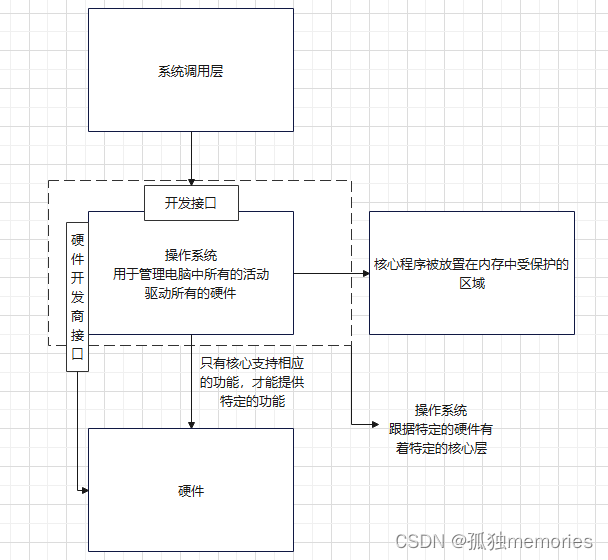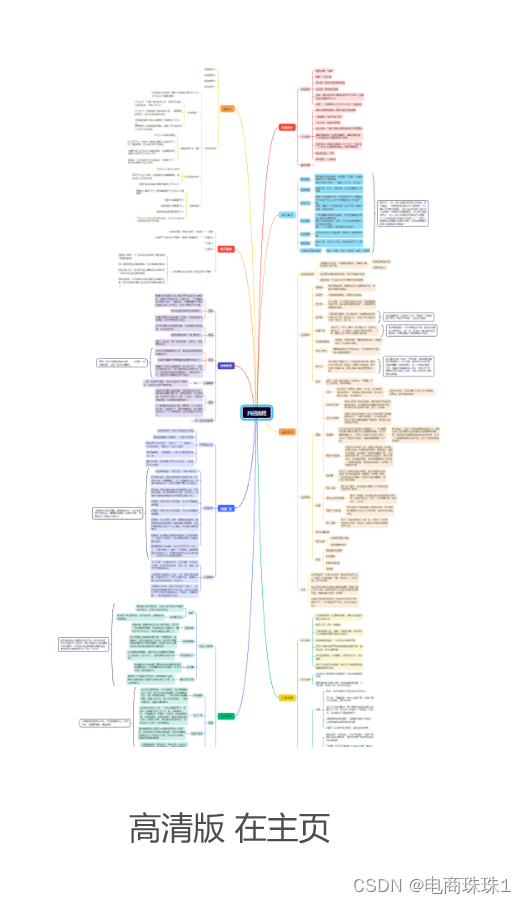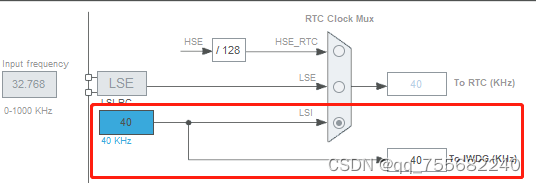需求描述
- 实际工作中,相比于mAP项目更加关心的是特定阈值下的precision和recall结果;
- 由于本次的GT中除了目标框之外还存在多边形标注,为此,计算IoU的方式从框与框之间变成了mask之间;
本文的代码适用于MMDetection下的预测结果和COCO格式之间来计算PR结果,具体的实现过程如下:
- 获取预测结果并保存到json文件中;
- 解析预测结果和GT;
- 根据image_id获取每张图的预测结果和GT;
- 基于mask计算预测结果和GT之间的iou矩阵;
- 根据iou矩阵得到对应的tp、fp和num_gt;
- 迭代所有的图像得到所有的tp、fp和num_gt累加,根据公式计算precision和recall;
具体实现
获取预测结果
在MMDetection框架下,通常使用如下的命令来评估模型的结果:
bash tools/dist_test.sh configs/aaaa/gaotie_cascade_rcnn_r50_fpn_1x.py work_dirs/gaotie_cascade_rcnn_r50_fpn_1x/epoch_20.pth 8 --eval bbox
此时能获取到类似下图的mAP结果。
 )
)
而我们需要在某个过程把预测结果保存下,用于后续得到PR结果,具体可以在mmdet/datasets/coco.py的438行位置添加如下代码:
try:
import shutil
cocoDt = cocoGt.loadRes(result_files[metric])
shutil.copyfile(result_files[metric], "results.bbox.json")
这样我们就可以得到results.bbox.json文件,里面包含的是模型的预测结果,如下图所示。
 )
)
获取GT结果
由于标注时有两个格式:矩形框和多边形,因此在构建GT的coco格式文件时,对于矩形框会将其四个顶点作为多边形传入到segmentations字段,对于多边形会计算出外接矩形传入到bbox字段。
 )
)
为此,获取GT信息的脚本实现如下:
def construct_gt_results(gt_json_path):
results = dict()
bbox_results = dict()
cocoGt = COCO(annotation_file=gt_json_path)
# cat_ids = cocoGt.getCatIds()
img_ids = cocoGt.getImgIds()
for id in img_ids:
anno_ids = cocoGt.getAnnIds(imgIds=[id])
annotations = cocoGt.loadAnns(ids=anno_ids)
for info in annotations:
img_id = info["image_id"]
if img_id not in results:
results[img_id] = list()
bbox_results[img_id] = list()
bbox = info["bbox"]
x1, y1, x2, y2 = bbox[0], bbox[1], bbox[0] + bbox[2], bbox[1] + bbox[3]
# results[img_id].append([x1, y1, x2, y2])
# mask = _poly2mask(info["segmentation"], img_h=1544, img_w=2064)
results[img_id].append(info["segmentation"])
bbox_results[img_id].append([x1, y1, x2, y2])
return results, img_ids, cocoGt, bbox_results
输入GT的json文件路径,返回所有图像的分割结果,image_id,COCO对象和目标框结果(用于后续的可视化结果)。
获取预测结果
模型预测出来的结果都是目标框的形式,与上面一样,将目标框的四个顶点作为多边形的分割结果。具体解析脚本如下:
def construct_det_results(det_json_path):
results = dict()
bbox_results = dict()
scores = dict()
with open(det_json_path) as f:
json_data = json.load(f)
for info in json_data:
img_id = info["image_id"]
if img_id not in results:
results[img_id] = list()
scores[img_id] = list()
bbox_results[img_id] = list()
bbox = info["bbox"]
x1, y1, x2, y2 = bbox[0], bbox[1], bbox[0] + bbox[2], bbox[1] + bbox[3]
segm = [[x1, y1, x2, y1, x2, y2, x1, y2]]
# mask = _poly2mask(segm, img_h=1544, img_w=2064)
score = info["score"]
# results[img_id].append([x1, y1, x2, y2, score])
results[img_id].append(segm)
bbox_results[img_id].append([x1, y1, x2, y2])
scores[img_id].append(score)
return results, scores, bbox_results
输入的是预测结果的json文件路径,输出是所有图像分割结果、得分和目标框结果。
根据image_id计算单个图像的TP、FP结果
本步骤的具体内容如下:
- 根据置信度阈值对预测框进行筛选;
- 将所有的多边形转换为mask,用于后续计算IoU;
- 得到tp和fp;
- 可视化fp和fn结果;
将多边形转换为mask
if img_id in det_results:
# for dt in det_results[img_id]:
for idx, score in enumerate(det_scores[img_id]):
# score = dt[-1]
if score > conf_thrs:
mask = _poly2mask(det_results[img_id][idx], img_h=1544, img_w=2064)
det_bboxes.append(mask)
det_thrs_scores.append(score)
plot_det_bboxes.append(det_tmp_bboxes[img_id][idx])
if img_id in gt_results:
for segm in gt_results[img_id]:
mask = _poly2mask(segm, img_h=1544, img_w=2064)
gt_bboxes.append(mask)
plot_gt_bboxes = gt_tmp_bboxes[img_id]
通过_poly2mask函数可以将多边形转换为mask,_poly2mask函数的实现如下。
def _poly2mask(mask_ann, img_h, img_w):
"""Private function to convert masks represented with polygon to
bitmaps.
Args:
mask_ann (list | dict): Polygon mask annotation input.
img_h (int): The height of output mask.
img_w (int): The width of output mask.
Returns:
numpy.ndarray: The decode bitmap mask of shape (img_h, img_w).
"""
if isinstance(mask_ann, list):
# polygon -- a single object might consist of multiple parts
# we merge all parts into one mask rle code
rles = maskUtils.frPyObjects(mask_ann, img_h, img_w)
rle = maskUtils.merge(rles)
elif isinstance(mask_ann['counts'], list):
# uncompressed RLE
rle = maskUtils.frPyObjects(mask_ann, img_h, img_w)
else:
# rle
rle = mask_ann
mask = maskUtils.decode(rle)
return mask
计算单张图像的TP和FP
本文中使用tpfp_default函数实现该功能,具体实现如下:
def tpfp_default(det_bboxes,
gt_bboxes,
gt_bboxes_ignore=None,
det_thrs_scores=None,
iou_thr=0.5,
area_ranges=None):
"""Check if detected bboxes are true positive or false positive.
Args:
det_bbox (ndarray): Detected bboxes of this image, of shape (m, 5).
gt_bboxes (ndarray): GT bboxes of this image, of shape (n, 4).
gt_bboxes_ignore (ndarray): Ignored gt bboxes of this image,
of shape (k, 4). Default: None
iou_thr (float): IoU threshold to be considered as matched.
Default: 0.5.
area_ranges (list[tuple] | None): Range of bbox areas to be evaluated,
in the format [(min1, max1), (min2, max2), ...]. Default: None.
Returns:
tuple[np.ndarray]: (tp, fp) whose elements are 0 and 1. The shape of
each array is (num_scales, m).
"""
# an indicator of ignored gts
gt_ignore_inds = np.concatenate(
(np.zeros(gt_bboxes.shape[0], dtype=np.bool),
np.ones(gt_bboxes_ignore.shape[0], dtype=np.bool)))
# stack gt_bboxes and gt_bboxes_ignore for convenience
# gt_bboxes = np.vstack((gt_bboxes, gt_bboxes_ignore))
num_dets = det_bboxes.shape[0]
num_gts = gt_bboxes.shape[0]
if area_ranges is None:
area_ranges = [(None, None)]
num_scales = len(area_ranges)
# tp and fp are of shape (num_scales, num_gts), each row is tp or fp of
# a certain scale
tp = np.zeros((num_scales, num_dets), dtype=np.float32)
fp = np.zeros((num_scales, num_dets), dtype=np.float32)
# if there is no gt bboxes in this image, then all det bboxes
# within area range are false positives
if gt_bboxes.shape[0] == 0:
if area_ranges == [(None, None)]:
fp[...] = 1
else:
det_areas = (det_bboxes[:, 2] - det_bboxes[:, 0] + 1) * (
det_bboxes[:, 3] - det_bboxes[:, 1] + 1)
for i, (min_area, max_area) in enumerate(area_ranges):
fp[i, (det_areas >= min_area) & (det_areas < max_area)] = 1
return tp, fp
# ious = bbox_overlaps(det_bboxes, gt_bboxes)
# ious = mask_overlaps(det_bboxes, gt_bboxes)
ious = mask_wraper(det_bboxes, gt_bboxes)
# for each det, the max iou with all gts
ious_max = ious.max(axis=1)
# for each det, which gt overlaps most with it
ious_argmax = ious.argmax(axis=1)
# sort all dets in descending order by scores
# sort_inds = np.argsort(-det_bboxes[:, -1])
sort_inds = np.argsort(-det_thrs_scores)
for k, (min_area, max_area) in enumerate(area_ranges):
gt_covered = np.zeros(num_gts, dtype=bool)
# if no area range is specified, gt_area_ignore is all False
if min_area is None:
gt_area_ignore = np.zeros_like(gt_ignore_inds, dtype=bool)
else:
gt_areas = (gt_bboxes[:, 2] - gt_bboxes[:, 0] + 1) * (
gt_bboxes[:, 3] - gt_bboxes[:, 1] + 1)
gt_area_ignore = (gt_areas < min_area) | (gt_areas >= max_area)
for i in sort_inds:
if ious_max[i] >= iou_thr:
matched_gt = ious_argmax[i] # 得到对应的GT索引
if not (gt_ignore_inds[matched_gt]
or gt_area_ignore[matched_gt]):
if not gt_covered[matched_gt]:
gt_covered[matched_gt] = True # GT占位
tp[k, i] = 1
else:
fp[k, i] = 1
# otherwise ignore this detected bbox, tp = 0, fp = 0
elif min_area is None:
fp[k, i] = 1
else:
bbox = det_bboxes[i, :4]
area = (bbox[2] - bbox[0] + 1) * (bbox[3] - bbox[1] + 1)
if area >= min_area and area < max_area:
fp[k, i] = 1
return tp, fp
过程是先获取预测框和GT框之间的IoU矩阵,然后按照置信度排序,将每个预测框分配给GT框得到tp和fp结果。
计算mask的IoU
IoU的定义都是一样的,计算公式如下:

基于mask计算IoU的实验也非常简单,代码如下:
def mask_overlaps(bboxes1, bboxes2, mode='iou'):
assert mode in ['iou', 'iof']
bboxes1 = bboxes1.astype(np.bool_)
bboxes2 = bboxes2.astype(np.bool_)
intersection = np.logical_and(bboxes1, bboxes2)
union = np.logical_or(bboxes1, bboxes2)
intersection_area = np.sum(intersection)
union_area = np.sum(union)
iou = intersection_area / union_area
return iou
而计算预测框和GT之间的IoU矩阵实现如下:
def mask_wraper(bboxes1, bboxes2, mode='iou'):
rows = bboxes1.shape[0] # gt
cols = bboxes2.shape[0] # det
ious = np.zeros((rows, cols), dtype=np.float32)
if rows * cols == 0:
return ious
for i in range(rows):
for j in range(cols):
iou = mask_overlaps(bboxes1[i], bboxes2[j])
ious[i, j] = iou
return ious
至此,通过上述过程就能获取到单张图像的tp和fp结果。
可视化FP和FN结果
此外,我们需要分析模型的badcase,因此,可以将FP和FN的结果可视化出来,我这里是直接将存在问题的图像所有预测框和GT框都画出来了。
if VIS and (fp > 0 or tp < gt):
img_data, path = draw_bbox(img_id=img_id, cocoGt=cocoGt, det_bboxes=plot_det_bboxes, gt_bboxes=plot_gt_bboxes)
if fp > 0:
save_dir = os.path.join(VIS_ROOT, "tmp/FP/")
os.makedirs(save_dir, exist_ok=True)
cv2.imwrite(os.path.join(save_dir, os.path.basename(path)+".jpg"), img_data, [int(cv2.IMWRITE_JPEG_QUALITY), 30])
if tp < gt:
save_dir = os.path.join(VIS_ROOT, "tmp/FN/")
os.makedirs(save_dir, exist_ok=True)
cv2.imwrite(os.path.join(save_dir, os.path.basename(path)+".jpg"), img_data,
[int(cv2.IMWRITE_JPEG_QUALITY), 30])
画框的实现如下:
def draw_bbox(img_id, cocoGt, det_bboxes, gt_bboxes):
path = cocoGt.loadImgs(ids=[img_id])[0]["file_name"]
img_path = os.path.join(IMG_ROOT, path)
img_data = cv2.imread(img_path)
for box in det_bboxes:
# color_mask = (0, 0, 255)
# color_mask = np.array([0, 0, 255], dtype=np.int8)
# bbox_mask = box.astype(np.bool)
cv2.rectangle(img_data, (int(box[0]), int(box[1])), (int(box[2]), int(box[3])), (0, 0, 255), 3)
# img_data[bbox_mask] = img_data[bbox_mask] * 0.5 + color_mask * 0.5
for box in gt_bboxes:
# color_mask = np.array([0, 255, 0], dtype=np.int8)
# bbox_mask = box.astype(np.bool)
# img_data[bbox_mask] = img_data[bbox_mask] * 0.5 + color_mask * 0.5
cv2.rectangle(img_data, (int(box[0]), int(box[1])), (int(box[2]), int(box[3])), (0, 255, 0), 3)
return img_data, path
至此,我们实现了单张图像的所有业务逻辑。
多线程计算所有图像结果
通过multiprocessing启动一个进程池来加速结果计算。
def eval_multiprocessing(img_ids):
from multiprocessing import Pool
pool = Pool(processes=16)
results = pool.map(eval_pr, img_ids)
# 关闭进程池,表示不再接受新的任务
pool.close()
# 等待所有任务完成
pool.join()
return np.sum(np.array(results), axis=0)
计算PR结果
返回所有图像的TP和FP结果之后,就可以计算precision和recall值了。
gt, tp, fp = eval_multiprocessing(img_ids)
eps = np.finfo(np.float32).eps
recalls = tp / np.maximum(gt, eps)
precisions = tp / np.maximum((tp + fp), eps)
print("conf_thrs:{:.3f} iou_thrs:{:.3f}, gt:{:d}, TP={:d}, FP={:d}, P={:.3f}, R={:.3f}".format(conf_thrs, iou_thrs, gt, tp, fp, precisions, recalls))
最后,也附上整个实现代码,方便后续复现或者参考。
from multiprocessing import Pool
import os
import numpy as np
import json
from pycocotools.coco import COCO
import cv2
from pycocotools import mask as maskUtils
def bbox_overlaps(bboxes1, bboxes2, mode='iou'):
"""Calculate the ious between each bbox of bboxes1 and bboxes2.
Args:
bboxes1(ndarray): shape (n, 4)
bboxes2(ndarray): shape (k, 4)
mode(str): iou (intersection over union) or iof (intersection
over foreground)
Returns:
ious(ndarray): shape (n, k)
"""
assert mode in ['iou', 'iof']
bboxes1 = bboxes1.astype(np.float32)
bboxes2 = bboxes2.astype(np.float32)
rows = bboxes1.shape[0]
cols = bboxes2.shape[0]
ious = np.zeros((rows, cols), dtype=np.float32)
if rows * cols == 0:
return ious
exchange = False
if bboxes1.shape[0] > bboxes2.shape[0]:
bboxes1, bboxes2 = bboxes2, bboxes1
ious = np.zeros((cols, rows), dtype=np.float32)
exchange = True
area1 = (bboxes1[:, 2] - bboxes1[:, 0] + 1) * (bboxes1[:, 3] - bboxes1[:, 1] + 1)
area2 = (bboxes2[:, 2] - bboxes2[:, 0] + 1) * (bboxes2[:, 3] - bboxes2[:, 1] + 1)
for i in range(bboxes1.shape[0]):
x_start = np.maximum(bboxes1[i, 0], bboxes2[:, 0])
y_start = np.maximum(bboxes1[i, 1], bboxes2[:, 1])
x_end = np.minimum(bboxes1[i, 2], bboxes2[:, 2])
y_end = np.minimum(bboxes1[i, 3], bboxes2[:, 3])
overlap = np.maximum(x_end - x_start + 1, 0) * np.maximum(y_end - y_start + 1, 0)
if mode == 'iou':
union = area1[i] + area2 - overlap
else:
union = area1[i] if not exchange else area2
ious[i, :] = overlap / union
if exchange:
ious = ious.T
return ious
def mask_wraper(bboxes1, bboxes2, mode='iou'):
rows = bboxes1.shape[0] # gt
cols = bboxes2.shape[0] # det
ious = np.zeros((rows, cols), dtype=np.float32)
if rows * cols == 0:
return ious
for i in range(rows):
for j in range(cols):
iou = mask_overlaps(bboxes1[i], bboxes2[j])
ious[i, j] = iou
return ious
def mask_overlaps(bboxes1, bboxes2, mode='iou'):
assert mode in ['iou', 'iof']
bboxes1 = bboxes1.astype(np.bool_)
bboxes2 = bboxes2.astype(np.bool_)
intersection = np.logical_and(bboxes1, bboxes2)
union = np.logical_or(bboxes1, bboxes2)
intersection_area = np.sum(intersection)
union_area = np.sum(union)
iou = intersection_area / union_area
return iou
def tpfp_default(det_bboxes,
gt_bboxes,
gt_bboxes_ignore=None,
det_thrs_scores=None,
iou_thr=0.5,
area_ranges=None):
"""Check if detected bboxes are true positive or false positive.
Args:
det_bbox (ndarray): Detected bboxes of this image, of shape (m, 5).
gt_bboxes (ndarray): GT bboxes of this image, of shape (n, 4).
gt_bboxes_ignore (ndarray): Ignored gt bboxes of this image,
of shape (k, 4). Default: None
iou_thr (float): IoU threshold to be considered as matched.
Default: 0.5.
area_ranges (list[tuple] | None): Range of bbox areas to be evaluated,
in the format [(min1, max1), (min2, max2), ...]. Default: None.
Returns:
tuple[np.ndarray]: (tp, fp) whose elements are 0 and 1. The shape of
each array is (num_scales, m).
"""
# an indicator of ignored gts
gt_ignore_inds = np.concatenate(
(np.zeros(gt_bboxes.shape[0], dtype=np.bool),
np.ones(gt_bboxes_ignore.shape[0], dtype=np.bool)))
# stack gt_bboxes and gt_bboxes_ignore for convenience
# gt_bboxes = np.vstack((gt_bboxes, gt_bboxes_ignore))
num_dets = det_bboxes.shape[0]
num_gts = gt_bboxes.shape[0]
if area_ranges is None:
area_ranges = [(None, None)]
num_scales = len(area_ranges)
# tp and fp are of shape (num_scales, num_gts), each row is tp or fp of
# a certain scale
tp = np.zeros((num_scales, num_dets), dtype=np.float32)
fp = np.zeros((num_scales, num_dets), dtype=np.float32)
# if there is no gt bboxes in this image, then all det bboxes
# within area range are false positives
if gt_bboxes.shape[0] == 0:
if area_ranges == [(None, None)]:
fp[...] = 1
else:
det_areas = (det_bboxes[:, 2] - det_bboxes[:, 0] + 1) * (
det_bboxes[:, 3] - det_bboxes[:, 1] + 1)
for i, (min_area, max_area) in enumerate(area_ranges):
fp[i, (det_areas >= min_area) & (det_areas < max_area)] = 1
return tp, fp
# ious = bbox_overlaps(det_bboxes, gt_bboxes)
# ious = mask_overlaps(det_bboxes, gt_bboxes)
ious = mask_wraper(det_bboxes, gt_bboxes)
# for each det, the max iou with all gts
ious_max = ious.max(axis=1)
# for each det, which gt overlaps most with it
ious_argmax = ious.argmax(axis=1)
# sort all dets in descending order by scores
# sort_inds = np.argsort(-det_bboxes[:, -1])
sort_inds = np.argsort(-det_thrs_scores)
for k, (min_area, max_area) in enumerate(area_ranges):
gt_covered = np.zeros(num_gts, dtype=bool)
# if no area range is specified, gt_area_ignore is all False
if min_area is None:
gt_area_ignore = np.zeros_like(gt_ignore_inds, dtype=bool)
else:
gt_areas = (gt_bboxes[:, 2] - gt_bboxes[:, 0] + 1) * (
gt_bboxes[:, 3] - gt_bboxes[:, 1] + 1)
gt_area_ignore = (gt_areas < min_area) | (gt_areas >= max_area)
for i in sort_inds:
if ious_max[i] >= iou_thr:
matched_gt = ious_argmax[i] # 得到对应的GT索引
if not (gt_ignore_inds[matched_gt]
or gt_area_ignore[matched_gt]):
if not gt_covered[matched_gt]:
gt_covered[matched_gt] = True # GT占位
tp[k, i] = 1
else:
fp[k, i] = 1
# otherwise ignore this detected bbox, tp = 0, fp = 0
elif min_area is None:
fp[k, i] = 1
else:
bbox = det_bboxes[i, :4]
area = (bbox[2] - bbox[0] + 1) * (bbox[3] - bbox[1] + 1)
if area >= min_area and area < max_area:
fp[k, i] = 1
return tp, fp
def _poly2mask(mask_ann, img_h, img_w):
"""Private function to convert masks represented with polygon to
bitmaps.
Args:
mask_ann (list | dict): Polygon mask annotation input.
img_h (int): The height of output mask.
img_w (int): The width of output mask.
Returns:
numpy.ndarray: The decode bitmap mask of shape (img_h, img_w).
"""
if isinstance(mask_ann, list):
# polygon -- a single object might consist of multiple parts
# we merge all parts into one mask rle code
rles = maskUtils.frPyObjects(mask_ann, img_h, img_w)
rle = maskUtils.merge(rles)
elif isinstance(mask_ann['counts'], list):
# uncompressed RLE
rle = maskUtils.frPyObjects(mask_ann, img_h, img_w)
else:
# rle
rle = mask_ann
mask = maskUtils.decode(rle)
return mask
def construct_det_results(det_json_path):
results = dict()
bbox_results = dict()
scores = dict()
with open(det_json_path) as f:
json_data = json.load(f)
for info in json_data:
img_id = info["image_id"]
if img_id not in results:
results[img_id] = list()
scores[img_id] = list()
bbox_results[img_id] = list()
bbox = info["bbox"]
x1, y1, x2, y2 = bbox[0], bbox[1], bbox[0] + bbox[2], bbox[1] + bbox[3]
segm = [[x1, y1, x2, y1, x2, y2, x1, y2]]
# mask = _poly2mask(segm, img_h=1544, img_w=2064)
score = info["score"]
# results[img_id].append([x1, y1, x2, y2, score])
results[img_id].append(segm)
bbox_results[img_id].append([x1, y1, x2, y2])
scores[img_id].append(score)
return results, scores, bbox_results
def construct_gt_results(gt_json_path):
results = dict()
bbox_results = dict()
cocoGt = COCO(annotation_file=gt_json_path)
# cat_ids = cocoGt.getCatIds()
img_ids = cocoGt.getImgIds()
for id in img_ids:
anno_ids = cocoGt.getAnnIds(imgIds=[id])
annotations = cocoGt.loadAnns(ids=anno_ids)
for info in annotations:
img_id = info["image_id"]
if img_id not in results:
results[img_id] = list()
bbox_results[img_id] = list()
bbox = info["bbox"]
x1, y1, x2, y2 = bbox[0], bbox[1], bbox[0] + bbox[2], bbox[1] + bbox[3]
# results[img_id].append([x1, y1, x2, y2])
# mask = _poly2mask(info["segmentation"], img_h=1544, img_w=2064)
results[img_id].append(info["segmentation"])
bbox_results[img_id].append([x1, y1, x2, y2])
return results, img_ids, cocoGt, bbox_results
def draw_bbox(img_id, cocoGt, det_bboxes, gt_bboxes):
path = cocoGt.loadImgs(ids=[img_id])[0]["file_name"]
img_path = os.path.join(IMG_ROOT, path)
img_data = cv2.imread(img_path)
for box in det_bboxes:
# color_mask = (0, 0, 255)
# color_mask = np.array([0, 0, 255], dtype=np.int8)
# bbox_mask = box.astype(np.bool)
cv2.rectangle(img_data, (int(box[0]), int(box[1])), (int(box[2]), int(box[3])), (0, 0, 255), 3)
# img_data[bbox_mask] = img_data[bbox_mask] * 0.5 + color_mask * 0.5
for box in gt_bboxes:
# color_mask = np.array([0, 255, 0], dtype=np.int8)
# bbox_mask = box.astype(np.bool)
# img_data[bbox_mask] = img_data[bbox_mask] * 0.5 + color_mask * 0.5
cv2.rectangle(img_data, (int(box[0]), int(box[1])), (int(box[2]), int(box[3])), (0, 255, 0), 3)
return img_data, path
def eval_pr(img_id):
tp, fp, gt = 0, 0, 0
gt_bboxes, gt_ignore = [], []
det_bboxes = list()
gt_bboxes = list()
det_thrs_scores = list()
plot_det_bboxes = list()
plot_gt_bboxes = list()
if img_id in det_results:
# for dt in det_results[img_id]:
for idx, score in enumerate(det_scores[img_id]):
# score = dt[-1]
if score > conf_thrs:
mask = _poly2mask(det_results[img_id][idx], img_h=1544, img_w=2064)
det_bboxes.append(mask)
det_thrs_scores.append(score)
plot_det_bboxes.append(det_tmp_bboxes[img_id][idx])
if img_id in gt_results:
for segm in gt_results[img_id]:
mask = _poly2mask(segm, img_h=1544, img_w=2064)
gt_bboxes.append(mask)
plot_gt_bboxes = gt_tmp_bboxes[img_id]
det_bboxes = np.array(det_bboxes)
gt_bboxes = np.array(gt_bboxes)
det_thrs_scores = np.array(det_thrs_scores)
gt_ignore = np.array(gt_ignore).reshape(-1, 4)
if len(gt_bboxes) > 0:
if len(det_bboxes) == 0:
tp, fp = 0, 0
else:
tp, fp = tpfp_default(det_bboxes, gt_bboxes, gt_ignore, det_thrs_scores, iou_thrs)
tp, fp = np.sum(tp == 1), np.sum(fp == 1)
gt = len(gt_bboxes)
else:
fp = len(det_bboxes)
if VIS and (fp > 0 or tp < gt):
img_data, path = draw_bbox(img_id=img_id, cocoGt=cocoGt, det_bboxes=plot_det_bboxes, gt_bboxes=plot_gt_bboxes)
if fp > 0:
save_dir = os.path.join(VIS_ROOT, "tmp/FP/")
os.makedirs(save_dir, exist_ok=True)
cv2.imwrite(os.path.join(save_dir, os.path.basename(path)+".jpg"), img_data, [int(cv2.IMWRITE_JPEG_QUALITY), 30])
if tp < gt:
save_dir = os.path.join(VIS_ROOT, "tmp/FN/")
os.makedirs(save_dir, exist_ok=True)
cv2.imwrite(os.path.join(save_dir, os.path.basename(path)+".jpg"), img_data,
[int(cv2.IMWRITE_JPEG_QUALITY), 30])
return gt, tp, fp
def eval_multiprocessing(img_ids):
from multiprocessing import Pool
pool = Pool(processes=16)
results = pool.map(eval_pr, img_ids)
# 关闭进程池,表示不再接受新的任务
pool.close()
# 等待所有任务完成
pool.join()
return np.sum(np.array(results), axis=0)
if __name__ == '__main__':
VIS = 1
IMG_ROOT = "gaotie_data"
VIS_ROOT = 'badcase-vis-test-2/'
conf_thrs = 0.5
iou_thrs = 0.001
det_json_path = "results.bbox.json"
gt_json_path = "datasets/gaotie_test_data/annotations/test5_seg_removed.json"
det_results, det_scores, det_tmp_bboxes = construct_det_results(det_json_path)
gt_results, img_ids, cocoGt, gt_tmp_bboxes = construct_gt_results(gt_json_path)
gt, tp, fp = eval_multiprocessing(img_ids)
eps = np.finfo(np.float32).eps
recalls = tp / np.maximum(gt, eps)
precisions = tp / np.maximum((tp + fp), eps)
print("conf_thrs:{:.3f} iou_thrs:{:.3f}, gt:{:d}, TP={:d}, FP={:d}, P={:.3f}, R={:.3f}".format(conf_thrs, iou_thrs, gt, tp, fp, precisions, recalls))
总结
本文针对目标检测任务中GT存在多边形情况下给出了如下计算数据集的PR结果,基于mask来计算IoU,与语义分割计算IoU的思路一致,最后也给出了所有的实现代码作为参考。





